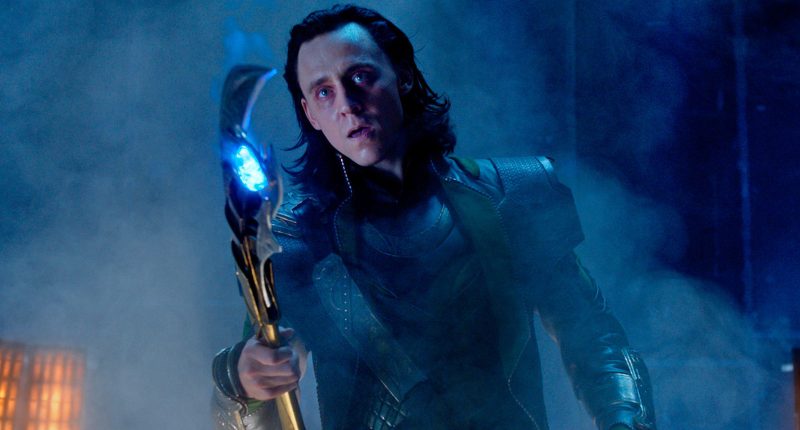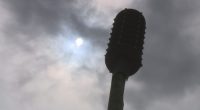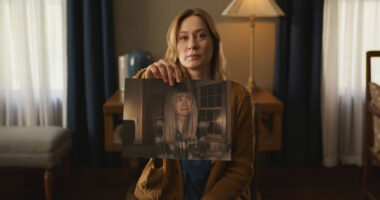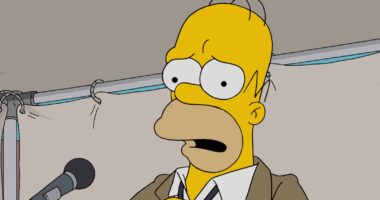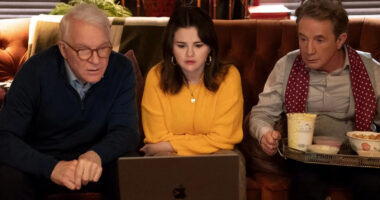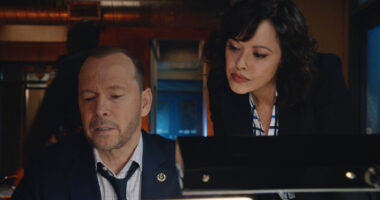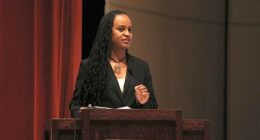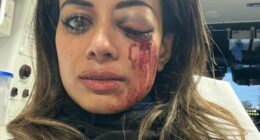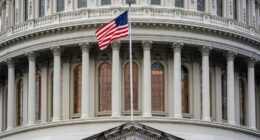Share this @internewscast.com
Throughout Hollywood’s history, celebrities have been invited for brief and memorable appearances, a trend that dates back to times when Groucho Marx appeared in “Will Success Spoil Ruck Hunter?” and Elizabeth Taylor had a fleeting role in the 1943 “Jane Eyre” adaptation. This affection for cameos has only grown in modern cinema. Blockbusters such as “Spider-Man: No Way Home,” “Avengers: Endgame,” and “The Mandalorian” have drawn significant cultural interest through short but exciting appearances of known characters. Even films like “The Fabelmans” have extracted amusement from small roles, such as David Lynch’s portrayal of John Ford. Despite the joy they bring to audiences, not every planned cameo makes it to the final cut.
In reality, numerous cameos are shot but ultimately cut during the editing process. These moments often get discarded for various reasons, from scenes not meeting expectations to the necessity of reshoots that eliminate these appearances. Sometimes, even more intricate and personal motives determine why specific cameos are left out.
There is no singular explanation for why these short, highly anticipated appearances fail to make it to the big screen, despite initial ambitions. However, what all these unrealized cameos share is that they offer intriguing backstories, regardless of not appearing in the finished films. They continue to entertain through the tales of their almost-existence, serving audiences in ways other than originally intended.
Liam Neeson in The Hangover: Part II
The role of a Bangkok tattoo artist in “The Hangover: Part II” spiraled into a series of endless headaches for everyone involved in the film. The turmoil started when Mel Gibson was hired to play the part. The decision proved controversial for certain members of the cast and crew, which required the role to be recast. Liam Neeson was called in shortly after to take over the role and do a single day of “Hangover” shooting. Given that filming was happening less than two years after Neeson’s career got a massive relaunch with “Taken,” this casting certainly seemed to qualify as an eye-catching celebrity cameo.
However, even though Neeson shot material for “Hangover: Part II,” the chaos was not finished just yet. Once the spring of 2011 rolled around, reshoots were necessary on “The Hangover: Part II,” including the segment involving Neeson’s tattoo artist. The problem was that the “Hangover” reshoots coincided with Neeson’s schedule on “Wrath of the Titans.”
Unable to get out of his commitments to that fantasy franchise feature, the role was recast once again with Nick Cassavetes. Best known as the director of movies like “John Q.” and “The Other Woman,” Cassavetes didn’t have anywhere near the star power of the previous two men connected to the role. However, with his casting, the saga around this tumultuous “Hangover: Part II” role finally came to a close.
Phil Lord and Chris Miller in Rogue One: A Star Wars Story
The folks hired to direct the first entries in Disney’s series of “Star Wars” movies made history — after all, this was the first time in over three decades that somebody besides George Lucas was helming live-action theatrical movies set in that galaxy far, far away. To commemorate the occasion, the original directors of the first three post-“The Force Awakens” movies decided to do something special: They all planned to make on-screen cameos in the films that they weren’t directing.
This meant Rian Johnson showed up in a blink-and-miss-it moment as a Death Star technician in “Rogue One,” while that film’s director, Gareth Edwards, made a silent cameo in the finale of Johnson’s “Star Wars: The Last Jedi.” Edwards can be seen silently holding a weapon in the background next to a Resistance fighter, who memorably observes that the surface of the planet Crait is covered in salt.
Original “Solo: A Star Wars Story” directors Phil Lord and Chris Miller were set to continue this tradition by appearing in “Rogue One.” The duo showed up to the film’s set one day and got decked out in elaborate costumes to appear in the background on the planet Jedha. However, before shooting their scenes, a personal family matter required them to leave. If they had appeared in the “Rogue One” theatrical cut, then Lord and Miller would have at least had a presence in the “Star Wars” saga before getting jettisoned from “Solo.”
Harrison Ford in E.T. the Extra-Terrestrial
Save for Elliot’s mother, “E.T. The Extra-Terrestrial” has no room for prominent adult characters. Casting a slew of famous faces in the grown-up roles would have distracted from a story firmly about a child’s relationship with an otherworldly pal. However, director Steven Spielberg very nearly disrupted that mandate with a cameo from one of the most famous leading men of the ’80s.
Indiana Jones himself, Harrison Ford, was supposed to appear in “E.T.” as Elliot’s (Henry Thomas) principal. Ford’s character would have been a stern authority figure chastising Elliot for his E.T.-induced shenanigans in science class. The joke here would have been that Ford, despite being such an incredibly popular star, would never have been fully seen in his “E.T.” screentime — only his voice and portions of his body.
Though the scene was shot, Spielberg eventually decided that the sequence distracted from the kid-centric focus of the movie. Plus Ford’s fleeting presence was jarring in a cast of largely unknowns and character actors. Thus the scene hit the cutting room floor, only surviving in odd, fragmented forms. Ford, of course, did just fine for himself even without “E.T.” in his resume, while “E.T.” did just fine at the box office — even deprived of a Harrison Ford cameo.
Wayne T. Carr in Zack Snyder’s Justice League
The final cut of “Zack Snyder’s Justice League” from March 2021 featured the on-screen live-action movie debuts of famous DC Comics characters like Martian Manhunter, Darkseid, DeSaad, Granny Goodness, and more. If Snyder’s full original vision had come to fruition, though, another DC Comics staple would have made it to the silver screen for the first time.
While a flashback in both versions of “Justice League” contained a briefly seen Green Lantern warrior, Green Lantern John Stewart was once set to show up in a closing sequence depicting the cosmic fighter meeting Ben Affleck’s Bruce Wayne. Wayne T. Carr was selected to play Stewart and got to shoot footage for a sequence that would have finally brought a major Green Lantern character into a feature-length movie for the first time since 2011’s “Green Lantern” debacle. Unfortunately, the cameo was vetoed by forces bigger than Snyder.
Warner Bros. brass apparently told Snyder that the studio had plans for John Stewart/Green Lantern in live-action that a “Zack Snyder’s Justice League” cameo would have disrupted. Unable to overcome this hurdle, Snyder replaced Carr’s Green Lantern with Martian Manhunter in this climactic “Justice League” sequence. With that, hopes of seeing John Stewart in a film were at least temporarily dashed, but a version of John Stewart played by Aaron Pierre is confirmed to star in the DC Studios TV series “Lanterns.”
Tom Hiddleston in Avengers: Age of Ultron
Tom Hiddleston is one of the Marvel Cinematic Universe’s most loyal performers, portraying Loki Laufeyson on six credited big screen occasions (plus one uncredited cameo), with a seventh on the way via “Avengers: Doomsday.” He’s also played Loki in two seasons of an acclaimed solo Disney+ show, not to mention six episodes of “What If…?” But Hiddleston could have extended his MCU legacy with a cameo filmed for “Avengers: Age of Ultron.”
As part of Thor’s (Chris Hemsworth) visions at the hands of Wanda Maximoff (Elizabeth Olsen), Thor hauntingly imagines all of Asgard and friends like Heimdall (Idris Elba) being led to ruin. Initially, this hallucination would have also included Loki, whom Thor thought was deceased after the events of “Thor: The Dark World.”
Hiddleston shot scenes for the film, but test screening responses to “Age of Ultron” ensured his footage wouldn’t make it into this already crowded Joss Whedon directorial effort. Per Hiddleston, test audiences got confused by Loki’s brief return and assumed this meant that the very first “Avengers” villain was the one controlling Ultron (James Spader). This led to Thor’s dream getting streamlined and Loki leaving “Age of Ultron.” Luckily for fans, even without this cameo, there are plenty of other Loki showcases to revel in.
Christian Bale in Song to Song
Nobody is safe from director Terence Malick’s affinity for cutting major actors from his movies in post-production. Just ask Adrien Brody, whose role in “The Thin Red Line” was infamously cut down to almost nothing. In the 2010s alone, actors as acclaimed as Jessica Chastain, Rachel Weisz, Benicio del Toro, and Trevante Rhodes (among others) were cut from various Malick projects. This notoriously reclusive filmmaker overhauls his works in the editing bay, and that messy process has no time for playing favorites.
Not even prolific actor Christian Bale — who played the lead role of Rick in Malick’s 2016 film “Knight of Cups” — was spared from this phenomenon. Having a prominent role in one Malick movie apparently wasn’t enough to ensure that Bale would end up appearing in another. Bale spent three days filming footage for Malick’s 2017 feature “Song to Song,” which was anchored by Ryan Gosling, Rooney Mara, and Natalie Portman. But as early as late 2013, Bale had already resigned himself to not showing up in the movie.
At this point, he openly remarked that, because his busy schedule resulted in his initially bigger “Song to Song” role getting trimmed down, he was doubtful he’d appeared in enough material to end up in the finished product. Bale’s hunch was correct, as he and several other notable actors were deleted from the theatrical cut of “Song to Song.” Malick’s habit of deleting famous folks was relentless.
Tim Blake Nelson in Dune: Part Two
Tim Blake Nelson’s career as an artist is impressive in its reach. As an actor, he’s appeared in movies ranging from “O Brother, Where Art Thou?” to “The Ballad of Buster Scruggs” to “Minority Report,” not to mention the revered “Watchmen” TV show. Meanwhile, as a filmmaker, he’s helmed acclaimed indie dramas like “Eye of God.” And Nelson’s expansive, high-quality resume almost included a trip to Arrakis in “Dune: Part Two.”
Nelson’s role in the film was never officially confirmed, but he apparently only had a single scene. Nelson noted that while he was “heartbroken” about getting left on the cutting room floor, he still relished his time on set and the chance to work with a director of Denis Villeneuve’s caliber.
Villeneuve has spoken about how challenging it is to cut any filmed material from his projects, so removing Nelson from “Dune: Part Two” was almost certainly not a decision made lightly. Plus, given how much material this sequel was juggling in its enormous script, it’s unsurprising that a character who only showed up in a solitary sequence wouldn’t be essential enough to stick around for the final cut. Even without a “Dune” cameo in his filmography, however, Tim Blake Nelson has still amassed a towering career any actor would be proud of.
Tobey Maguire in Life of Pi
2012’s “Life of Pi” follows Piscine Molitor “Pi” Patel at ages 16 and 17 (played by Suraj Sharma) as he survives on the open seas with only the tiger Richard Parker for company. Director Ang Lee’s adaptation of the Yann Martel novel of the same name also features wraparound sequences where an older Pi (Irrfan Khan) regales a Canadian writer with his life story. In the film’s final cut, that sparingly seen writer (a stand-in for Martel) is played by Rafe Spall — but originally, this character was played by someone far more familiar to Western audiences.
The initial casting for this role would have reunited Lee with his “The Ice Storm” star — and the original Peter Parker — Tobey Maguire. However, during post-production, Lee decided that “Life of Pi” just didn’t benefit at all from the presence of such a famous American face, which meant Tobey Maguire had to be recast. Thus the lesser-known British actor Spall was called upon to take over the role. The massive worldwide box office haul of $609 million procured by “Life of Pi” over the 2012 holiday season made it clear the film didn’t need a Spider-Man cameo to become a financial juggernaut.
Paul Dooley in Little Shop of Horrors
Many fans consider 1986’s film adaptation of “Little Shop of Horrors” to be one of the all-time great musical movies, not to mention a dazzling display of practical puppetry effects. However, there was initially some last-minute panicking over the film’s conclusion. “Little Shop of Horrors” originally had an alternate ending that was more faithful to the bleak wrap-up of its Broadway source material.
Lead characters Seymour (Rick Moranis) and Audrey (Ellen Greene) would have perished, while various Audrey II plants would have taken over the world. Test screening audiences found this sequence, though dazzling in spectacle, far too grim. Director Frank Oz quickly filmed a new ending that ensured the heroes survived after the climactic “Big Green Mother From Outer Space” musical number, though this came at the cost of one of the film’s original cameos.
Marketing executive Patrick Martin, who shows up in both endings, was initially set to be played by “Breaking Down” and “Cars” supporting player Paul Dooley. But Dooley was simply unavailable for the reshoots, which meant Jim Belushi secured the role instead in the revamped finale. Having a comedic actor take over the cameo also helped accentuate a lighter tone in the climax, but losing Paul Dooley was one of many bumps “Little Shop of Horrors” endured before becoming a musical movie classic.
Rob McElhenney in Deadpool and Wolverine
After he and Ryan Reynolds anchored the Hulu reality program “Welcome to Wrexham,” it seemed inevitable that “It’s Always Sunny in Philadelphia” veteran Rob McElhenney would get a role in “Deadpool and Wolverine.” This project was near and dear to Reynolds, which ensured that many people important in his personal life (including his wife and children) showed up in the film’s final cut.
McElhenney did shoot a cameo for “Deadpool and Wolverine” as a TVA agent, but while “Deadpool and Wolverine” had no shortage of buzzy cameos, McElhenney was not one of them. Shortly after its theatrical premiere, Reynolds revealed that McElhenney was cut from the film despite going through a lot of effort to make it to the “Deadpool” set. But once the film was in the editing suite, Reynolds realized that McElhenney’s scene would play better if it wasn’t interrupted by his cameo.
Not even a Wrexham bond was enough to ensure that this sitcom legend could enter the Marvel Cinematic Universe. Despite Reynolds’ appreciation for McElhenney’s creative conviction, not to mention their larger friendship, McElhenney’s “Deadpool and Wolverine” moment was deleted. At least Reynolds and McElhenney will always have Wrexham and soccer uniting them.
Alan Tudyk in Rogue One
Among Alan Tudyk’s many memorable voiceover roles is the snippy, uber-frank droid K-2SO in 2016’s “Rogue One: A Star Wars Story.” But it wasn’t just his on-set “Rogue One” co-stars that Tudyk cracked up whenever he broke character. Tudyk’s finely tuned comic line deliveries as K-2SO produced some of the finest moments in “Rogue One,” making K-2SO a “Star Wars” droid that stood on its own two feet compared to C-3PO, R2-D2, and BB-8.
However, Tudyk’s presence in “Rogue One” was once planned to be even bigger than just providing his voice to a droid. Initially, Tudyk had a live-action cameo in director Gareth Edwards’ film that would have referenced another project in the actor’s filmography. Tudyk was supposed to play a “Rogue One” character who is portrayed by his fictional struggling actor character Wray Nerely from the short-lived Vimeo TV series “Con Man.”
Despite this second role being incredibly meta, it got cut during post-production. That suited Tudyk just fine, though, and not just because he still had his K-2SO character. This development perfectly fit with Nerely’s “Con Man” struggles. For Tudyk, a flailing performer like Nerely would never secure a role in a movie as big as “Rogue One,” and landing on the cutting room floor was par for the course for his tormented career.
